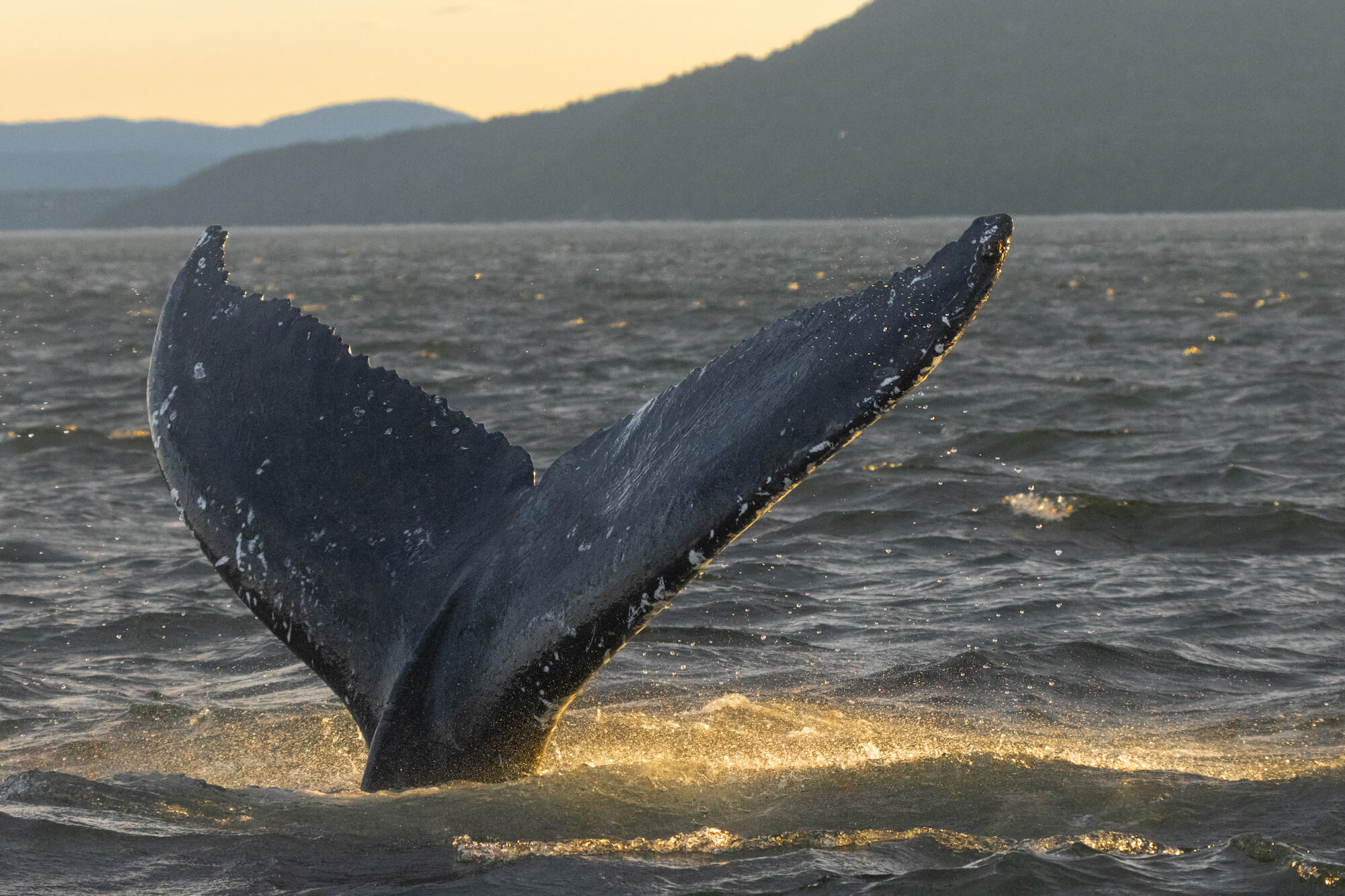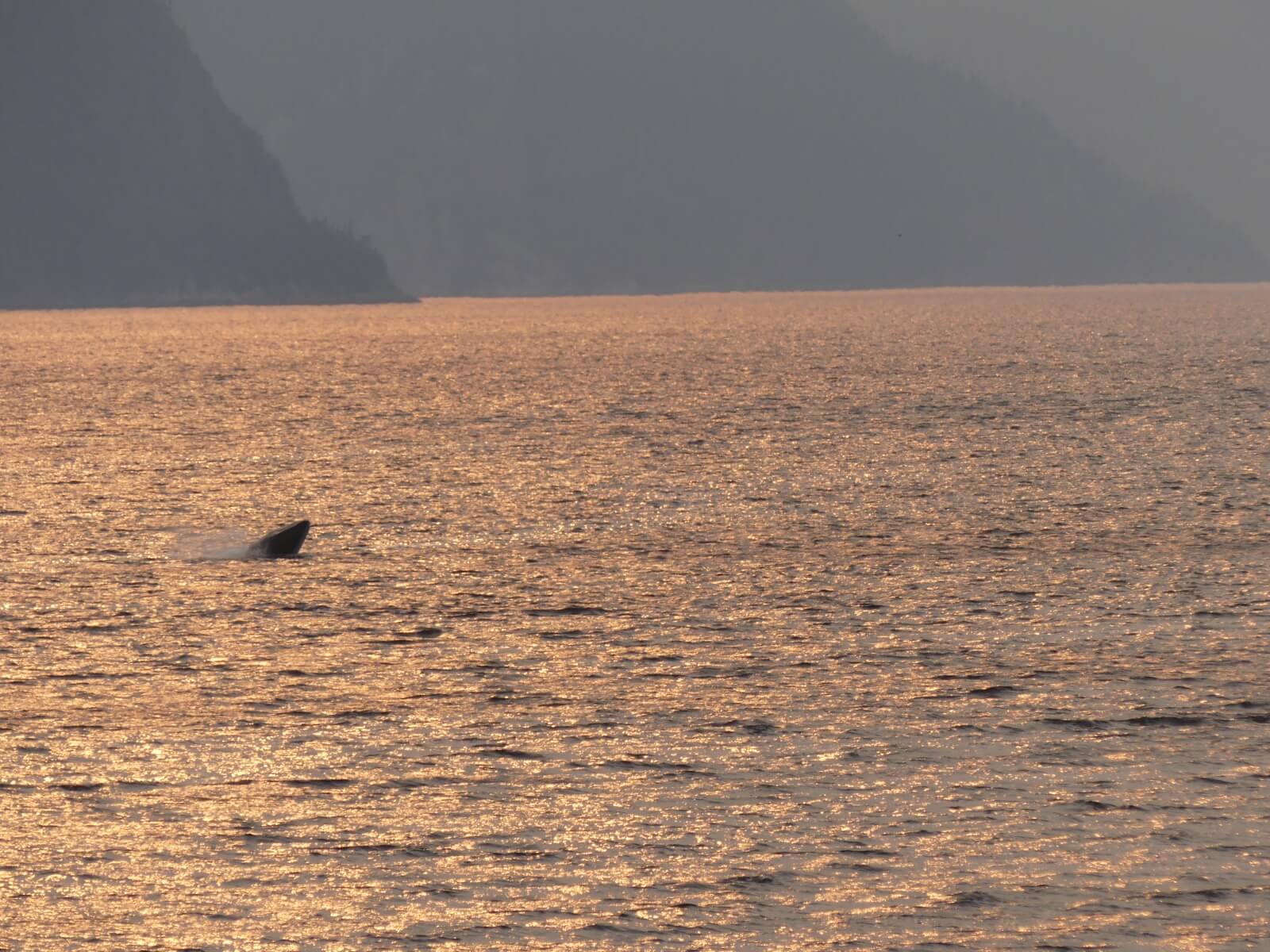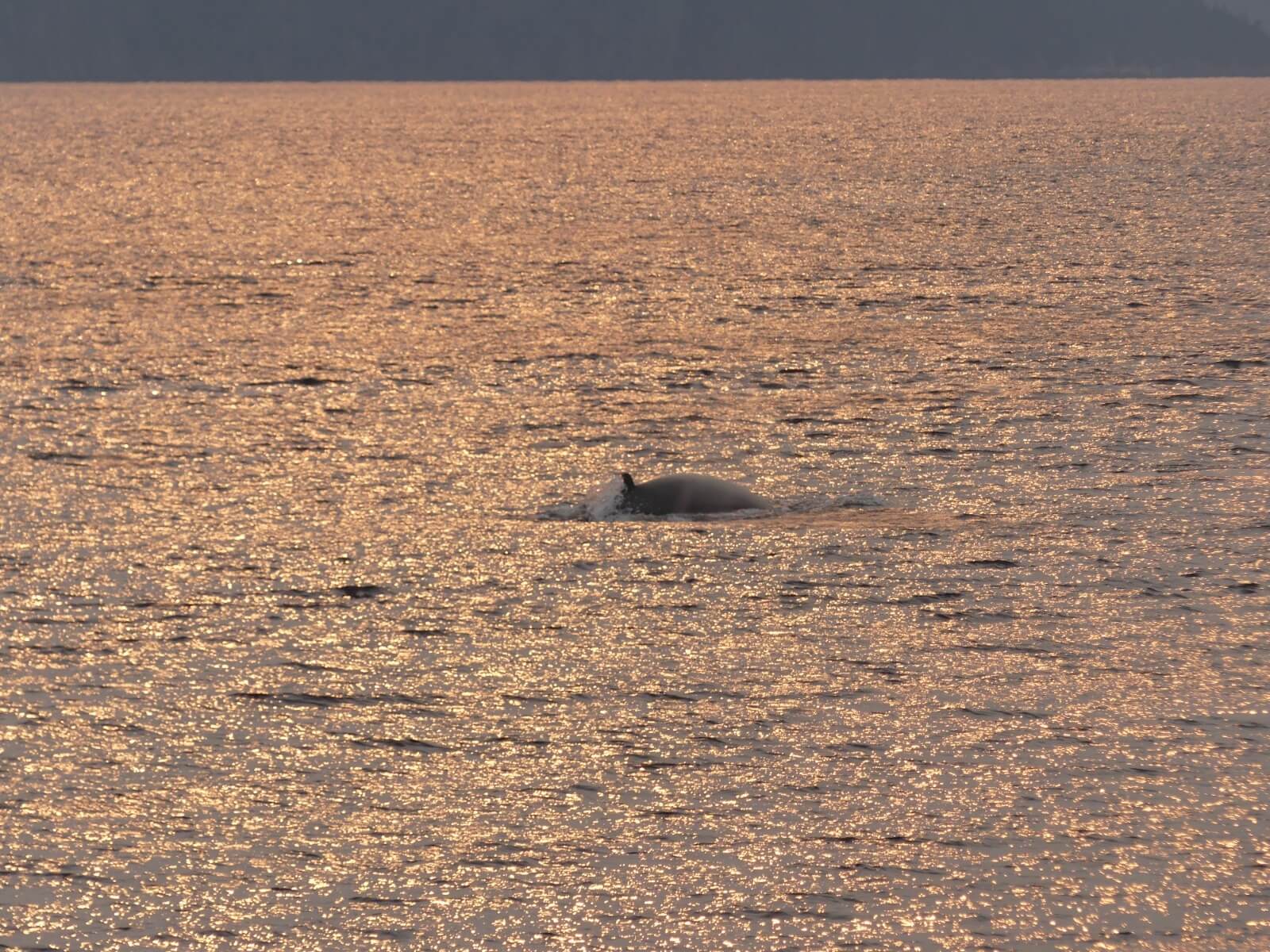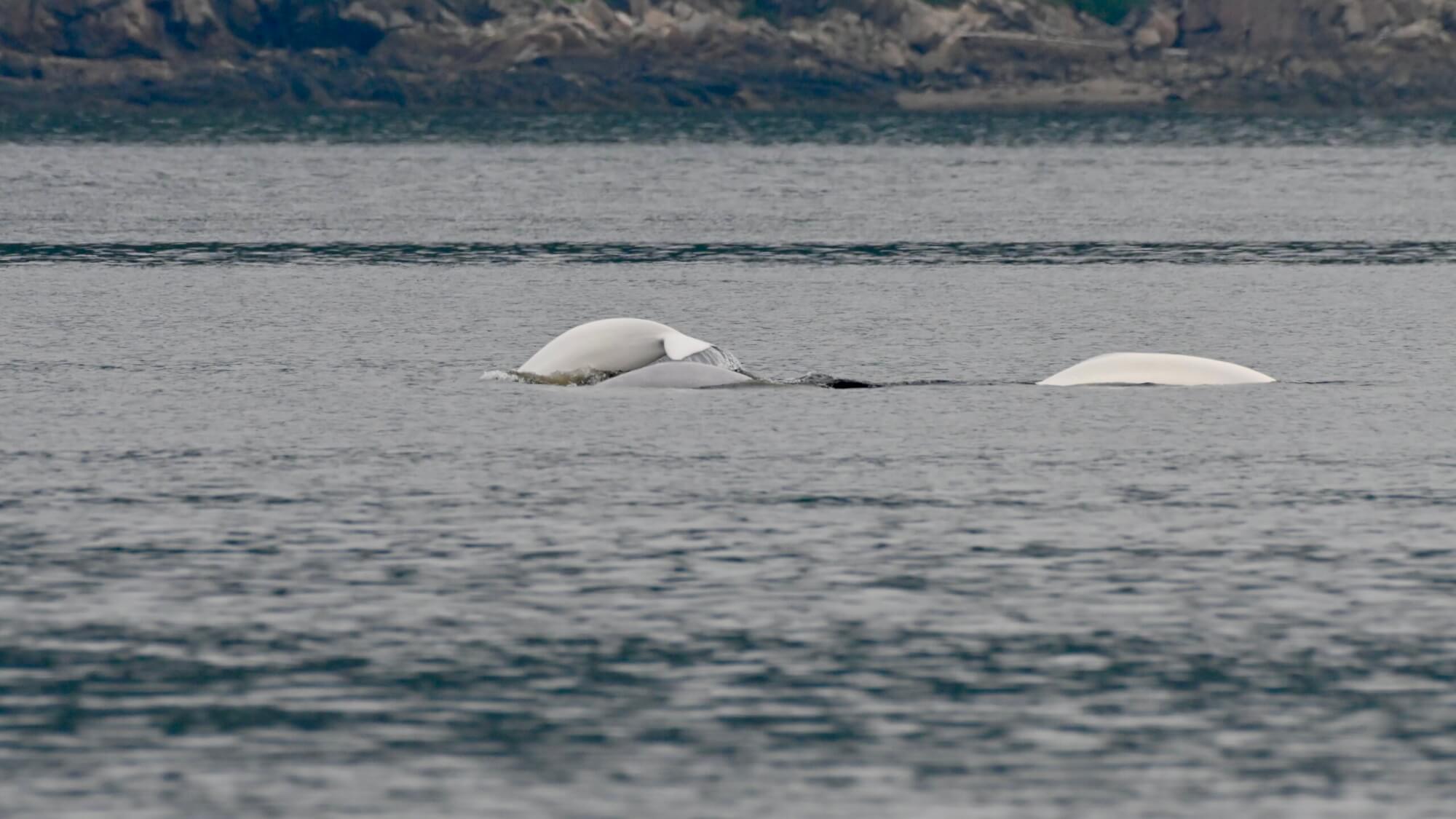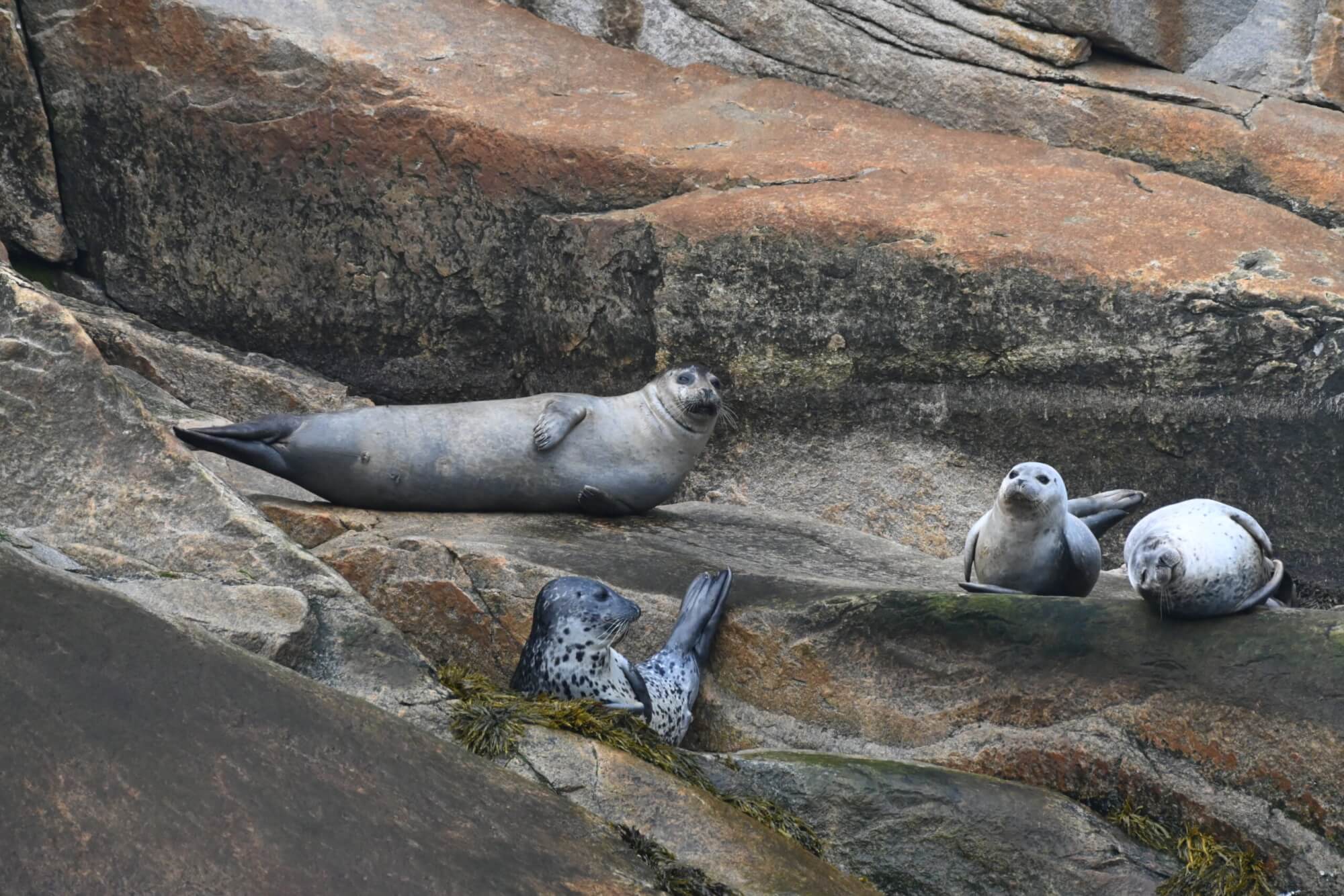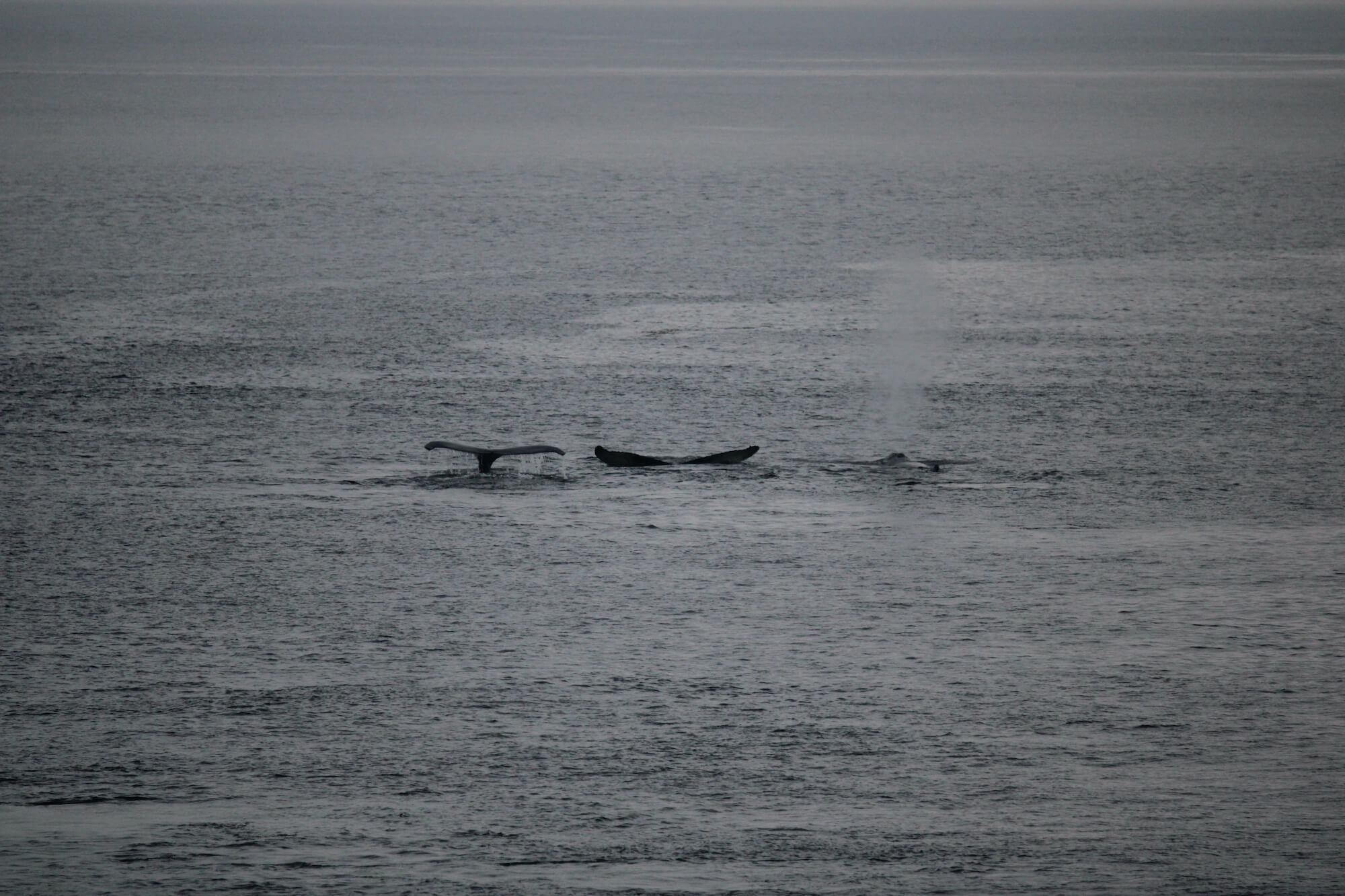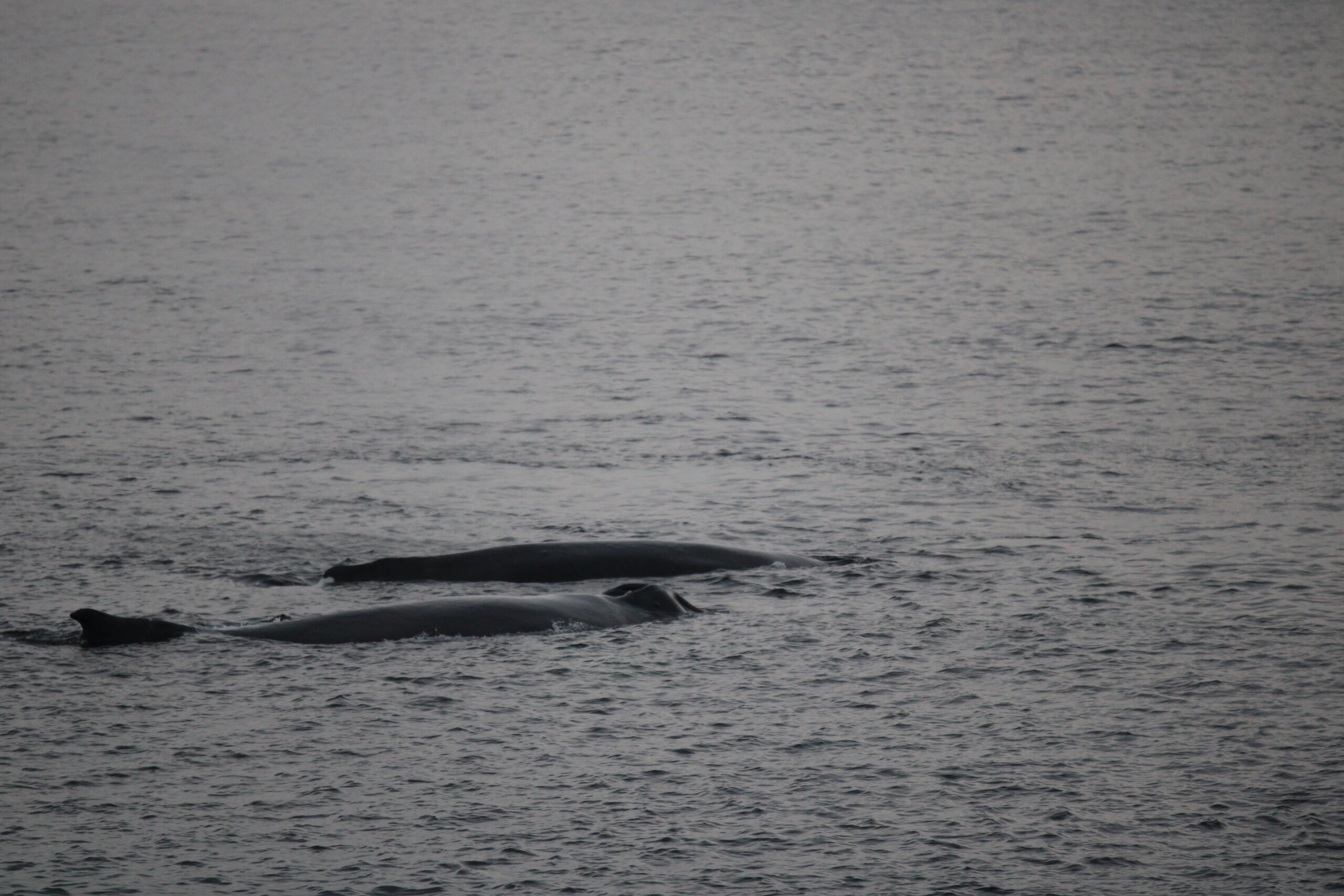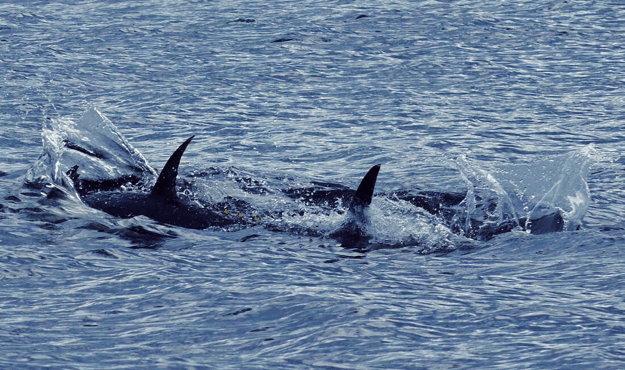A bioluminescent night with belugas in Tadoussac, a humpback whale breaching during a meal in Les Escoumins, dozens of right whales spotted near Anticosti and nine blue whales in the Sept-Îles and Matane sectors… This week’s whale encounters are all as unique as they are exceptional!
Whale watching at Pointe de L’Islet
It was with her two feet on dry land that one marine mammal enthusiast was able to observe minke whales in a mesmerizing setting. She enthusiastically recounts her experience in Tadoussac: “I had the chance to attend a nearly 2-hour-long performance at Pointe de L’Islet: two minke whales feeding and occasionally breaching!” With the reflections of the magical sunset related to the forest fires, it was an awesome sight to behold!”
White whales were also very active at this location during the week: “Belugas very, very close to Pointe de L’Islet , comments one naturalist. They were so close we could see them from the CIMM lobby. In fact, at first we weren’t even sure whether they might be waves. And we could see their exhalations with our binoculars.”
Other observations sometimes occur at this location… in the middle of the night! It was on a mission to observe bioluminescence that Tadoussac locals ventured down to Pointe de L’Islet: “[…] we were stirring the icy water with our hands; it was amazing! Wherever we looked, it was like glitter. All of a sudden we heard one or two breaths, then more and more and very close together. A huge group of belugas was approaching. Their breathing was getting louder and louder, it felt like they were 20 metres away from us, but in the dark of the night and with the fog, it was impossible to see anything.” Their other senses were on alert, however, so they were able to hear the whales. “What’s incredible is that they stuck around. They were making big splashes and started vocalizing; it was crazy. Just us and the belugas for about an hour, then we went home spellbound, with “glitter” on our hands and stars in our eyes!”
Whales don’t stop at night! For scientists, it’s much more difficult to study them when they can’t observe them. Despite everything, by tracking their movements with tags or thermal sensors (whale breath being warmer than water) studies have been carried out on rorquals and right whales.
The observer concludes that all the senses are good for sharing moments with whales: “I think that whale ‘watching’ at night is under-rated, so long as you’re careful not to fall into the water! You don’t necessarily have to see them to be satisfied!”
Humpback whales and Quebec gastronomy
The Saguenay-St. Lawrence Marine Park has welcomed a flurry of new humpback whales in recent days: Le Souffleur, known since 1997, H915, whose speckled tail seems to come straight out of a painting, H854 (Wolfgang), as well as another rorqual that has yet to be identified. On Sunday, two rorquals that have been roaming the region for several weeks, Gaspar and Irisept, swam in front of the outdoor recreation centre in Les Bergeronnes, not to mention a fin whale that was also passing through. Harbour porpoises and seals round out the marine fauna picture in the area. A grey seal was also eyeing the harbour seals at their haul-out site, says one naturalist. An intruder!
One evening, a poutine lover went to the rocks in Les Escoumins to observe whales while enjoying her quintessential Québécois staple. “Several porpoises and at least one grey seal throughout my dinner.” As she was getting ready to leave, the presence of a nearby cruise ship made her wonder about the possible presence of larger whales. “A few minutes later, a minke whale surfaced very close to the rocks. I told myself the minke might be the highlight, but I lingered a bit before leaving, and then… It’s a good thing I waited around because Le Souffleur (H531) surfaced right in front of me, about 50 metres away. Then, a second blow followed and it was Cocotte… a third one (Gaspar)… and then one final spout, which was that of H919. The four individuals were all less than 100 metres from the rocks!”
These humpbacks seemed to be heading toward the ferry terminal, so the resident hurriedly followed them, but the whales ultimately turned around and headed back to their starting point near the rocks, much to the delight of those who had decided to stay there. Two of the humpbacks even breached! It’s not always easy to guess how they’re going to behave. In any case, it was still a more-than-productive evening. Poutine and whales… One might call that a true Côte-Nord experience!
Blue whales and tuna
The Sept-Îles Education and Research Centre (CERSI) team reported the presence of nine blue whales, one fin whale and one humpback. Fish were also present, as more than ten bluefin tuna were observed jumping above the water surface. These large predators can reach two metres in length, weigh up to 600 kg and live up to 40 years. They come to the St. Lawrence to feed on mackerel, herring and sardines.
In the Matane region, a regular observer and MICS partner had the chance to cross paths with nine blue whales. This encounter was a real surprise in his case, as he had not seen this species in the area for four years, though it used to come to feed here more frequently. “To my great surprise, yesterday I was surrounded by nine blue whales in a very small area and in less than 200 feet of water,” he comments on social media. “That’s where their food was, judging by the large clouds on the screen of my echo sounder. Also near my boat was the humpback whale Chalk, a regular visitor to the area who also felt very alone and squeezed out by this multitude of gentle giants that now appeared to be staking claim to its food.”
Right whales and sharks
The Mingan Island Cetacean Study (MICS) team spotted basking sharks and about ten North Atlantic right whales near Anticosti Island and off the coast of Rivière-au-Tonnerre. Did you know that there is an interactive map for detecting North Atlantic right whales? The Whale Insight map allows you to visualize right whale detections in Canadian waters. For the curious, an advanced map even features data filtering options.
Fall is right around the corner!
Foggy days in the Franquelin area made observations there more difficult. For one enthusiast, harbour porpoises were nevertheless present, making their tiny rhythmic blows heard in the calm weather. According to a local, minke whales and seals are still active amongst the gannets and terns. Last Tuesday in Godbout, a humpback whale was heard blowing in the fog.
A humpback whale was observed in Gaspé Bay, though things appear to be rather quiet in terms of large whales. Ever-abundant seals provide a bit of action, not to mention the presence of other species. “Fortunately, there have been many white-sided dolphins and bluefin tuna,” says one naturalist. “They’ve been putting on breathtaking shows. A group of 150 dolphins showed up. […] Tuna were also jumping, making it that much easier to appreciate their impressive size.” Pelagic birds were also present: “Phalaropes and Manx shearwaters have been seen in numbers: autumn is slowly setting in.”
Where are the whales this week? Observation map
These data were reported by our network of observers. They give an idea of the presence of whales and in no way represent the actual distribution of whales in the St. Lawrence. Just for fun!
Click on the whale or seal icons to discover the species, the number of individuals, additional information or photos of the sighting. To enlarge the map, click on the icon in the top right-hand corner. The map works well on Chrome and Firefox, but not so well on Safari.
To display the list of sightings, click on the icon in the top left-hand corner.
Thanks to all our collaborators!
Special thanks go out to all our observers who share their love for marine mammals with us! Your encounters with cetaceans and pinnipeds are always a pleasure to read and discover.
On the water or from shore, it is your eyes that give life to this column.
Florentine
Odélie Brouillette
Marie-Andrée Charleboix
Thalia Cohen Bacry
Laetitia Desbordes
Antoine Lala-Beaufils
Jade-Audrey Lavergne
Yael Medav
Élizabeth Melis
Camille Némond
Diane Ostiguy
Chloé Pazart
Renaud Pintiaux
Pascal Pitre
René Roy
Guillaume Savard
Christine Stadelmann
Andréanne Sylvain
Marielle Vanasse
Additionally, we would like to acknowledge the following teams that also share their sightings:
Sept-Îles Research and Education Centre (CERSI)
Group for Research and Education on Marine Mammals (GREMM)
Marine Mammal Observation Network (MMON)
Quebec Marine Mammal Emergency Response Network (QMMERN)
Mingan Island Cetacean Study (MICS)
Would you also like to share your observations?
Have you seen any marine mammals in the St. Lawrence? Whether it’s a spout offshore or just a couple of seals, drop us a line and send your photos to [email protected]!


